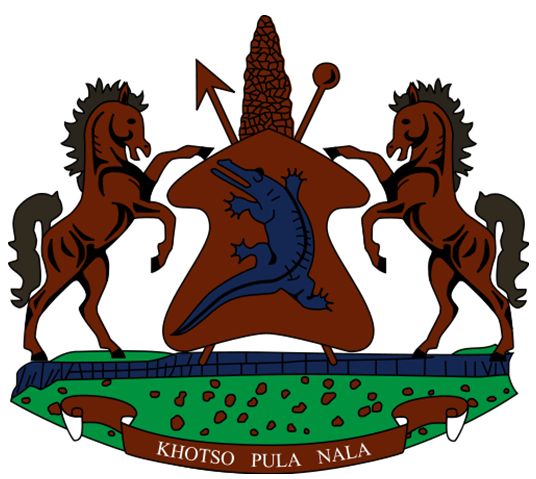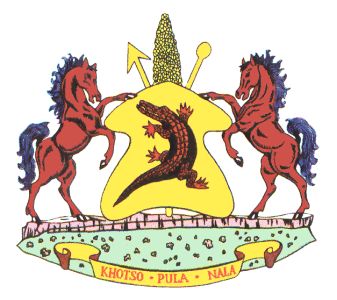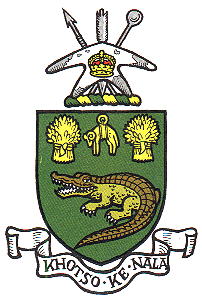National Arms of Lesotho: Difference between revisions
Knorrepoes (talk | contribs) m (Text replacement - "|Arms of {{PAGENAME}}]]" to "|Coat of arms (crest) of {{PAGENAME}}]]") |
Knorrepoes (talk | contribs) m (Text replacement - "===Official blazon===↵↵===Origin/meaning===" to "{| class="wikitable" |+Official blazon |- |'''English''' | blazon wanted |} ===Origin/meaning===") |
||
| Line 5: | Line 5: | ||
[[File:Lesotho.jpg|center|Coat of arms (crest) of {{PAGENAME}}]] | [[File:Lesotho.jpg|center|Coat of arms (crest) of {{PAGENAME}}]] | ||
= | {| class="wikitable" | ||
|+Official blazon | |||
|- | |||
|'''English''' | |||
| blazon wanted | |||
|} | |||
===Origin/meaning=== | ===Origin/meaning=== | ||
Latest revision as of 14:08, 29 January 2024
National Arms of Lesotho
| English | blazon wanted |
Origin/meaning
The arms were adopted on October 4, 2006.
The shape of the shield is typical for the Sotho tribes. The crocodile is the symbol of the Royal Family form the Koena dynasty (there are no crocodiles in Lesotho though).
The supporters are two Lesotho ponies, a special breed of ponies adapted to the cold harsh winters in the country. The shield is placed on the Thaba Bosiu mountain, the place of the fortress of the founder of the Kingdom of Lesotho.
The previous arms were granted on October 4, 1966 and show the shield in gold.
The arms of Basutoland, the name of the country as a British protectorate are shown below.
The arms also show the crocodile as the main charge. In the chief are a fleece and two garbs, which symbolise the agricultural character of the country. The crest shows local weapons and the British crown.
Contact and Support
Partners:
Your logo here ?
Contact us
© since 1995, Heraldry of the World, Ralf Hartemink 
Index of the site















